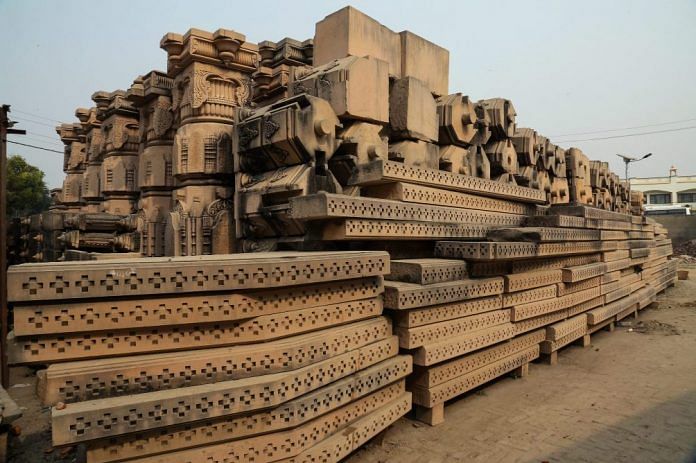New Delhi: Nirmohi Akhara, one of the claimants of the disputed Ram Janmabhoomi-Babri Masjid site at Ayodhya, told the Supreme Court Tuesday that its possession was “exclusive” as after the 1934 riots till 1949, Muslims were allowed to offer Friday prayers only, that too under police protection.
The Akhara, which claimed to be manager through its Mahant of Ram Janambhoomi, told the top court that only offering Friday prayers under police protection would not change the legal character of the possession of the disputed site.
A five-judge Constitution bench headed by Chief Justice Ranjan Gogoi was told by senior advocate Sushil Jain that offering mere Friday prayers cannot lead to a conclusion of “joint possession” of the structure by the Hindus and the Muslims.
“Assuming the evidence produced by the Muslim Parties to suggest that they, after the 1934 Riots used to visit the place under police protection for prayers on Fridays is to be accepted, it would not change the legal character of possession of the plaintiff (Nirmohi Akhara) being in settled possession and such intermittent infringement of possession which according to that evidence also stood restored after the prayers cannot lead to a conclusion of joint possession of the Hindus with the Muslims,” Jain said.
Also read: Ayodhya mediation fails, Supreme Court to hear day-to-day appeals from 6 August
Nirmohi Akhara, one of the claimants of the ownership and possession of the disputed property or the inner courtyard of the structure opened the arguments in the decades old dispute before a bench, also comprising Justices S A Bobde, D Y Chandrachud, Ashok Bhushan and S Abdul Nazeer.
Jain said, the fact that the Muslims had to take police protection for the Friday prayers shows that they were not in possession of the disputed structure.
“On the contrary, the fact that the Muslims had to take police protection for the Friday prayers would show that they were not in possession and there was undoubtedly an infringement and unequivocal threat since 1934 and hence they ought to have filed a suit for possession within 12 years. It is stated that having failed to file a suit, title if any was lost and got extinguished under section 28 of the Limitation Act, 1908,” the Akhara said.
Jain in his submission which remained inconclusive and would continue tomorrow claimed that Janma Asthan now commonly known as Janam Bhumi, the birth place of Lord Ram Chandra was belonging to and in possession of the Akhara, which was also acting as its Manager through its Mahant and Sarbrahkar who had been managing and receiving offerings made there in the form of money.
He said that the “outer courtyard” which included the structures like -Chabutra, Sita Rasoi and Bhandar Giriha, was always been in possession of the Nirmohi Akhara and it was never in dispute till December 18, 1961, when Sunni Central
Board of Waqfs filed a suit.
The Akhara said that “the access of the Main Temple or the Inner Courtyard is through the Outer Courtyard only. There is no separate access to the Main Temple Area which is claimed by the Muslim Parties as the “Babri Masjid”.”
Akhara specifically argued that no Muslim could or ever did enter the temple Building or has even attempted to enter the structure at least since 1934.
Also read: Three reasons why Ayodhya dispute should not be resolved as a Hindu-Muslim issue






